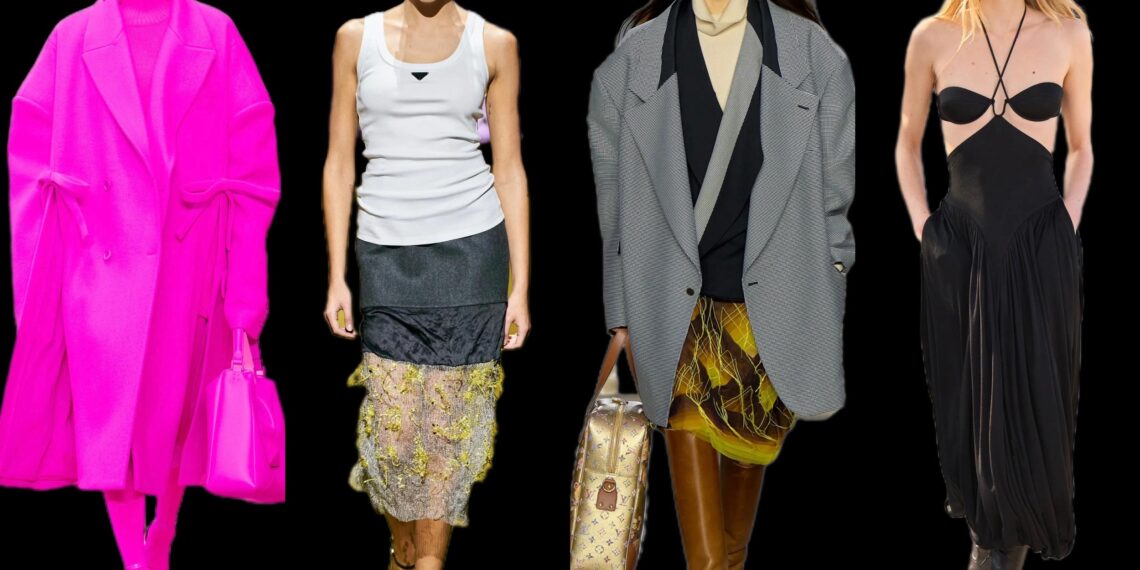The Evolution of Streetwear: From Subculture to Mainstream Influence
Streetwear, once a niche style born from skate and hip-hop cultures, has exploded into a global phenomenon, influencing high fashion and consumer trends alike. Its journey is a fascinating study of cultural appropriation, democratization, and the power of social media.
1. The Roots of Rebellion
Streetwear emerged in the late 1970s and early 1980s, fueled by the DIY ethos of skateboarding, surfing, and hip-hop. Brands like Shawn Stussy, with its hand-drawn logo, captured the spirit of rebellion and individuality. These early adopters weren’t just buying clothes; they were buying into a lifestyle, a community that valued authenticity and self-expression. This counter-cultural aesthetic laid the foundation for streetwear’s future success.
2. The Rise of Hype and Exclusivity
Limited-edition releases, collaborations, and strategically cultivated hype became hallmarks of streetwear in the 1990s and 2000s. Brands like Supreme mastered the art of creating demand through scarcity, with coveted items reselling for exorbitant prices. This exclusivity fueled the desire for ownership, turning streetwear into a status symbol recognized far beyond its original subcultures. The internet and online forums played a crucial role in amplifying this phenomenon.
3. Luxury’s Embrace
High fashion houses initially dismissed streetwear, but they couldn’t ignore its growing influence. Collaborations between luxury brands and streetwear labels became increasingly common, blurring the lines between high and low fashion. Virgil Abloh’s appointment as artistic director of Louis Vuitton in 2018 marked a pivotal moment, signaling streetwear’s complete integration into the mainstream. This fusion has redefined luxury, making it more accessible and relevant to younger audiences.
4. Streetwear Today and Beyond
Today, streetwear is a multifaceted global industry, encompassing a wide range of styles and subcultures. Social media platforms like Instagram and TikTok have become crucial platforms for brands to connect with consumers and build communities. Sustainability and inclusivity are increasingly important considerations for both brands and consumers. The future of streetwear likely involves further blurring of boundaries, with technology and personalization playing an increasingly significant role.
Casual Style: Balancing Comfort and Aesthetic Appeal
Casual style emphasizes comfort and personal expression while maintaining an aesthetically pleasing appearance. It’s a versatile approach to fashion that prioritizes ease of wear and individual style.
1. Defining Casual Wear
Casual wear generally encompasses clothing suitable for everyday use, excluding formal occasions. It often includes items like jeans, t-shirts, sweaters, sneakers, and comfortable dresses. The goal is to create a relaxed and effortless look. Modern casual fashion is evolving, with many people expressing individuality through colors, patterns, and accessories. This style reflects a shift towards a more relaxed and personalized approach to dressing.
2. Key Elements of Casual Style
Comfort is paramount in casual style. Fabrics like cotton, linen, and soft knits are favored for their breathability and ease of movement. Fit is also crucial; relaxed silhouettes and comfortable cuts are preferred over restrictive or overly tailored garments. The key is to choose pieces that allow for freedom of movement and all-day comfort. Accessories should complement the outfit without being too fussy or formal.
3. Achieving an Aesthetic Balance
While comfort is key, casual style doesn’t sacrifice aesthetics. Balancing comfort with visual appeal involves paying attention to details like color coordination, proportion, and texture. A well-chosen color palette can elevate a simple outfit, while layering different textures adds visual interest. Accessories, such as scarves, hats, or jewelry, can enhance the overall look without compromising comfort.
4. The Influence of Trends
Casual style is not immune to fashion trends, but it adapts them in a way that prioritizes comfort and practicality. For example, oversized silhouettes and athleisure wear have become popular trends within casual fashion. These trends offer both comfort and style, making them a natural fit for the casual aesthetic. Incorporating trendy pieces into a casual wardrobe can keep it current without sacrificing comfort.
Designer Brands: Crafting Identity Through High Fashion
Designer brands represent more than just clothing; they embody aspirational lifestyles and cultural values, shaping individual and collective identity through carefully curated aesthetics.
1. The Allure of Exclusivity
Designer brands cultivate an aura of exclusivity through limited production runs, high price points, and strategic distribution. This perceived scarcity enhances the desirability of their products, transforming them into status symbols. Owning a piece from a renowned designer signifies membership in an elite group, appealing to consumers seeking social distinction and self-expression through material possessions. This strategy fosters brand loyalty and justifies premium pricing.
2. Storytelling and Brand Narrative
Beyond mere aesthetics, designer brands weave intricate narratives around their collections. These stories often draw inspiration from art, history, or cultural movements, adding depth and meaning to the garments. Marketing campaigns and runway shows serve as platforms to communicate these narratives, creating an emotional connection with consumers. By associating their products with compelling stories, brands elevate them from commodities to cultural artifacts.
3. Impact of Celebrity Endorsements
Celebrity endorsements play a crucial role in shaping the perception of designer brands. When influential figures wear and promote specific designers, it generates widespread media attention and influences consumer behavior. These partnerships not only increase brand visibility but also imbue the products with the celebrity’s personal brand and values. This association can significantly boost sales and enhance the brand’s overall image.
Accessories as Statements: Enhancing Personal Style
Accessories are more than just add-ons; they’re powerful tools for self-expression, capable of transforming an outfit and reflecting individual personality. They add the finishing touches that elevate a look from simple to stylish.
1. The Power of Jewelry
Jewelry has always been a key component of personal style. Bold necklaces, delicate bracelets, and eye-catching earrings can instantly elevate an outfit. In recent years, there’s been a surge in popularity of personalized jewelry like initial pendants and custom-made pieces that tell a story. Statement earrings, particularly those with geometric shapes or vibrant colors, are also trending, allowing individuals to express their creativity and confidence. The right piece of jewelry can draw attention to the face, complement skin tone, and reflect individual taste.
2. Scarves: Versatile and Chic
Scarves are incredibly versatile accessories that can add color, texture, and warmth to any outfit. From lightweight silk scarves perfect for spring to cozy knit scarves for winter, there’s a scarf for every season and style. They can be worn around the neck, tied to a handbag, or even used as a head wrap, offering endless possibilities for creative expression. Patterned scarves, especially those with floral or abstract designs, are a popular choice for adding a pop of color to neutral outfits.
3. Belts: Defining the Silhouette
Belts are not just functional; they’re also a stylish way to define the waist and add structure to an outfit. Wide belts with statement buckles are particularly popular, cinching the waist and creating an hourglass silhouette. Chain belts are also making a comeback, adding a touch of edginess to dresses and skirts. A well-chosen belt can transform a shapeless garment into a flattering and fashionable ensemble, highlighting the wearer’s best features.
4. Handbags: Functionality Meets Fashion
Handbags are an essential accessory for carrying everyday essentials, but they also serve as a fashion statement. The style, size, and color of a handbag can significantly impact the overall look. Mini bags, crossbody bags, and tote bags are all popular choices, each offering different levels of functionality and style. The right handbag can complete an outfit, adding a touch of sophistication or personality.
Fashion Trends: Navigating the Cycle of Change and Innovation
Fashion trends are constantly evolving, influenced by cultural shifts, technological advancements, and consumer preferences. Understanding this cyclical nature helps both designers and consumers stay informed and adapt to the ever-changing landscape.
1. The Rise of Sustainability
Sustainable fashion has moved from a niche trend to a mainstream concern. Consumers are increasingly aware of the environmental impact of their clothing choices, leading to a higher demand for eco-friendly materials like organic cotton, recycled polyester, and innovative textiles such as pineapple leather (Piñatex). Brands are responding by implementing more sustainable production practices, reducing waste, and promoting transparency in their supply chains. This shift reflects a growing awareness of the fashion industry’s role in climate change and a desire for more ethical and responsible consumption.
2. Digital Fashion and the Metaverse
The metaverse is opening up new possibilities for fashion, with digital clothing and accessories becoming increasingly popular. Avatars can now express themselves through virtual garments, and designers are creating exclusive digital collections for online platforms. This trend is driven by the growing interest in virtual worlds and the desire for unique digital identities. Digital fashion also offers opportunities for experimentation and creativity, as designers are not limited by the constraints of physical materials or production processes.
3. Inclusivity and Body Positivity
The fashion industry is becoming more inclusive, with brands offering a wider range of sizes and celebrating diverse body types. This shift is driven by a growing awareness of the importance of body positivity and the need for representation in fashion. Brands that embrace inclusivity are not only expanding their customer base but also building stronger relationships with their audience by promoting a more positive and empowering message.
4. The Enduring Influence of Social Media
Social media platforms continue to play a significant role in shaping fashion trends. Influencers, bloggers, and celebrities use platforms like Instagram and TikTok to showcase their personal style and promote new products. These platforms also provide a space for consumers to discover new trends and share their own fashion inspiration. The fast-paced nature of social media contributes to the rapid evolution of fashion trends, as new styles and ideas can quickly gain popularity and spread across the globe.






